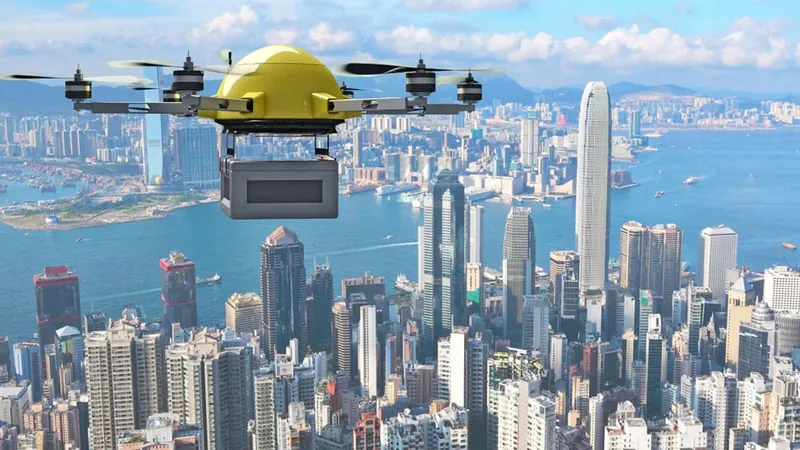
Hong Kong Soars Into the Future: Embracing Larger Drones to Transform Urban Mobility
2025-06-14
Author: Jessica Wong
A Skyward Shift in Hong Kong's Economy
Hong Kong is gearing up for a revolution in urban mobility, planning to pave the way for flying vehicles to become a staple of everyday life. As part of this transformation, the government is poised to allow businesses to test larger drones capable of carrying heavier loads, aiming to invigorate the low-altitude economy.
Deputy Financial Secretary Michael Wong Lun unveiled these ambitious plans during the International Automotive & Supply Chain Expo on June 14, where technology and commerce converged with over a hundred government officials, business leaders, and innovators.
Unlocking the Potential of Drone Technology
Wong made it clear that while not every drone initiative will take flight, the potential rewards are enormous. "Some businesses will succeed after commercialisation, while others will not," he acknowledged. However, insights suggest a global drone market brimming with possibilities, possibly worth billions in the upcoming years.
The government is working diligently to update local laws, facilitating the utilization of larger drones across various sectors. A pivotal change is the allowance for heavier payloads, vastly broadening commercial applications.
Learning from Bold Explorations
Last November, Hong Kong initiated a sandbox project designed to foster the low-altitude economy. This initiative permits selected businesses to experiment with aerial vehicles below 1,000 meters. The first phase showcased 38 innovative projects, including food delivery, public transport, and logistics, with a second phase expected to commence in six months according to Transport and Logistics Secretary Mable Chan.
The potential market for these advancements is skyrocketing. Bank of America estimates that by 2030, the global low-altitude economy could balloon to an impressive $23 billion with upwards of 30,000 operational drones. Projections suggest astonishing growth, forecasting the market to reach a staggering $210 billion by 2045.
Hong Kong's Bright Aerial Future
Mainland China has already established significant progress in urban air mobility through supportive policies and initiatives. Visionary start-ups are racing to develop flying cars to mitigate urban traffic woes.
Xiaopeng, the founder of electric vehicle frontier Xpeng, envisions Hong Kong as a prime location for burgeoning drone businesses, thanks to its high population density. His company's innovative Land Aircraft Carrier showcases a dream blend of a smart minivan and an eVTOL aircraft.
Mainland enterprises like Hongqi, Geely Auto, GAC Group, and Chery Automobile are also in the race to redefine aerial transportation, geared towards establishing themselves as leaders in the future of mobility.
Though Hong Kong might be late to the aerial revolution, Wong is optimistic about learning from mainland successes. With its emerging drone policy and innovative roadmap, Hong Kong is set to witness a dramatic transformation in how people and goods traverse its vibrant skies.


 Brasil (PT)
Brasil (PT)
 Canada (EN)
Canada (EN)
 Chile (ES)
Chile (ES)
 Česko (CS)
Česko (CS)
 대한민국 (KO)
대한민국 (KO)
 España (ES)
España (ES)
 France (FR)
France (FR)
 Hong Kong (EN)
Hong Kong (EN)
 Italia (IT)
Italia (IT)
 日本 (JA)
日本 (JA)
 Magyarország (HU)
Magyarország (HU)
 Norge (NO)
Norge (NO)
 Polska (PL)
Polska (PL)
 Schweiz (DE)
Schweiz (DE)
 Singapore (EN)
Singapore (EN)
 Sverige (SV)
Sverige (SV)
 Suomi (FI)
Suomi (FI)
 Türkiye (TR)
Türkiye (TR)
 الإمارات العربية المتحدة (AR)
الإمارات العربية المتحدة (AR)